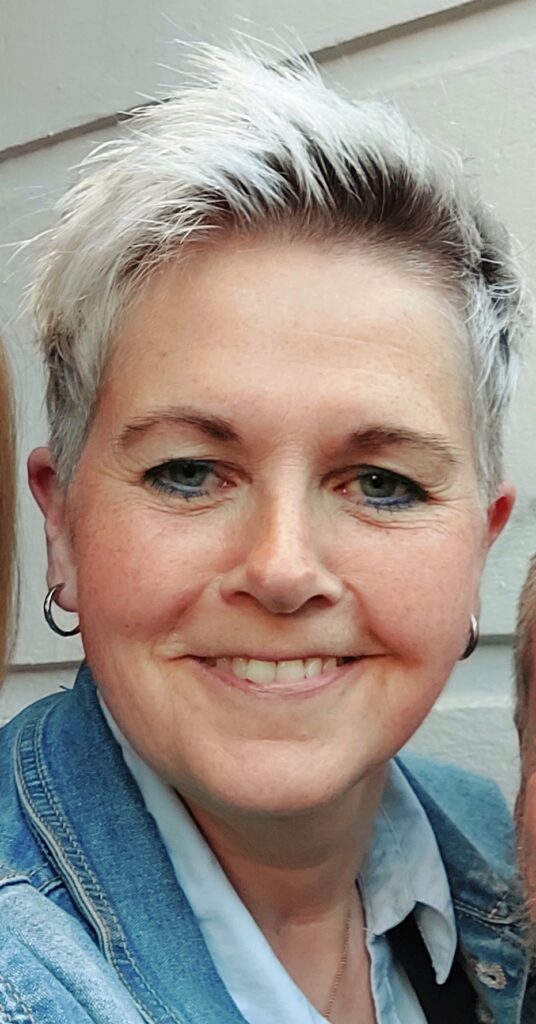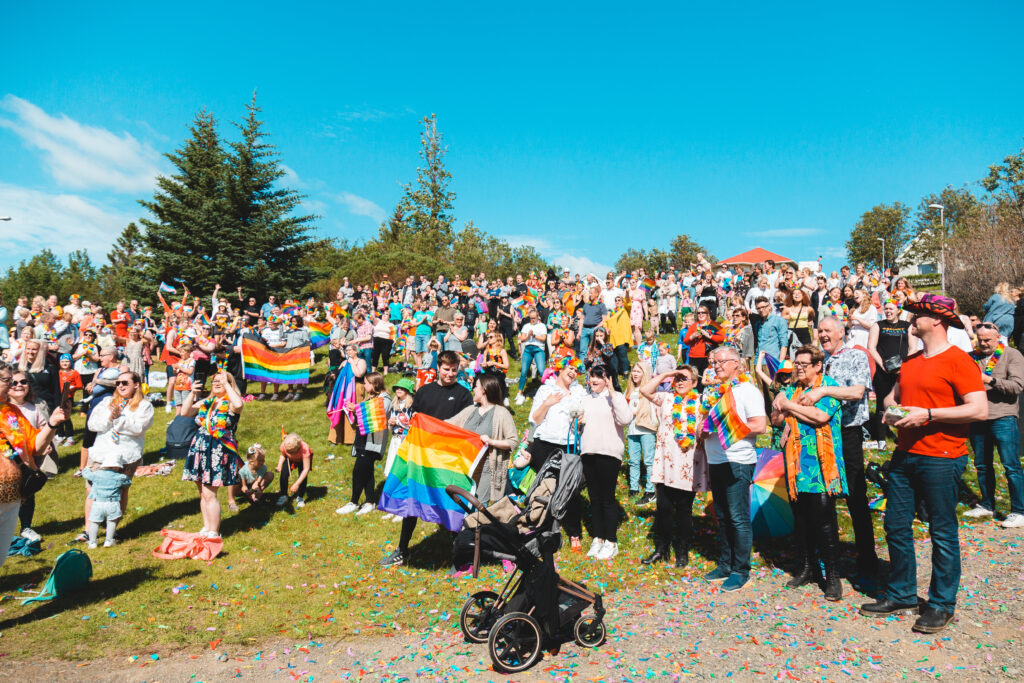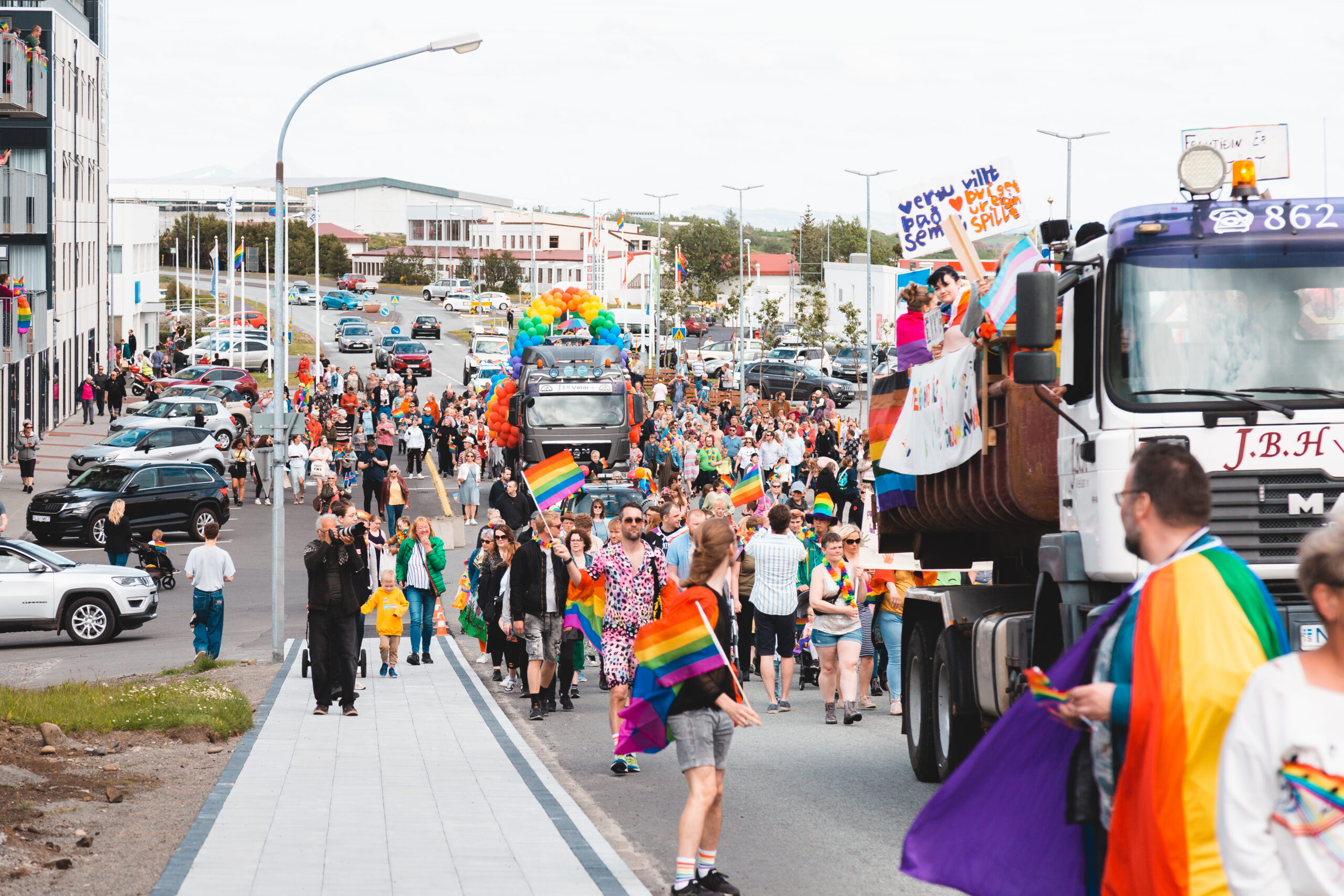The Vesturland Pride Festival and Parade, which takes place for the fourth time in Borgarnes (a town located on a peninsula at the shore of Borgarfjörður in Iceland) between the 27th – 30th of June, have become a cornerstone of the local LGBTQAI+ community, representing both celebration and visibility. Gunna, Guðrún Steinunn Guðbrandsdóttir, president of Hinsegin Vesturland, shared insights into the festival’s origins, milestones, challenges, and future aspirations.

“The main goal of the festival is to be visible in the community, especially for the young people and the general public,” Gunna explains. “The festival is not only about visibility but also about celebrating achievements and enjoying time with family and friends. It serves as a platform to acknowledge progress while fostering a fun, inclusive environment.”
Gunna recounts the inspiration behind the festival. “When I moved to Borgarnes about 10 years ago, I felt that something had to be done to make the LGBTQ+ community more visible.”
With her sister’s help, Gunna secured funding for a pride parade in Borgarnes in the summer of 2020. Although the pandemic delayed the event, it also expanded its scope, leading to the creation of Hinsegin Vesturland. The organization was officially founded online on February 11, 2021, uniting people from across Vesturland.
Reflecting on the festival’s history, Gunna highlights the first parade in the summer of 2021 as a standout moment. “We were overwhelmed with kindness, and the number of people who joined us exceeded our wildest hopes,” she says. The perfect weather and enthusiastic participation marked a significant milestone for the festival.
When I moved to Borgarnes about 10 years ago, I felt that something had to be done to make the LGBTQ+ community more visible.
Attractions, Notable Participants, Collaboration and Support
This year Vesturland Pride Festival offers a variety of attractions and events, starting with the parade on Saturday, followed by performances from well-known pop artists, such as Sigga Ózk, Saga Matthildur and Ukulellur, and emerging talents. Additional highlights include educational documentaries by Hrafnhildur Gunnarsdóttir on Icelandic LGBT+ history, youth truck preparations, and a Saturday night disco featuring DJ Karitas, Friðrik Ómar and Selma Björnsdóttir. Local talents like the Barakórur choir will also participate, showcasing the community’s artistic diversity.
Organizing the festival comes with its share of challenges. Gunna notes that financing the event and relying on voluntary work can be difficult. However, the positive community response has been a strong motivator, with many eager to lend a hand.

The festival collaborates with various local groups and organizations, including the town festival Brákarhátíð, Borgarbyggð, Skallagrímur football club, and the Development Fund of West Iceland. These partnerships are crucial for the festival’s success. Collaborating with the Borgarnes town festival Brákarhátíð enhances the event lineup and community participation, according to Gunna. The partnership brings more events and integrates the festival into the broader town celebration.
To engage the local community, the festival hires local artists and encourages participation in the parade. Residents are also urged to show their support by displaying pride flags at their homes, businesses, and organizations.
My ultimate vision is for the festival to become an annual event that highlights local LGBTQ+ artists.
Financially, the most significant expenses are paying performing artists and arranging youth workshops. Logistically, cooperation with authorities, the police, and the entire community is vital for the festival’s smooth operation.

The festival is funded by the Development Fund of West Iceland and the sale of rainbow products. Local authorities and sponsors also provide crucial support, with almost all businesses in Borgarnes contributing by purchasing flags and decorations.
An Impact on the LGBTQ+ Community and the Overall Community
The festival has significantly impacted Vesturland’s LGBTQ+ community, making people of all generations feel more comfortable being themselves and fostering a more open and accepting community. Gunna notes an increase in people openly discussing their identities and sexual orientations since the festival’s inception.
Looking ahead, Gunna envisions increasing the visibility of the LGBTQ+ community and continuing to hold the festival annually. She also aims to promote local LGBTQ+ artists and ensure the festival remains a vibrant part of Vesturland’s cultural landscape.
“My ultimate vision is for the festival to become an annual event that highlights local LGBTQ+ artists,” she says, “and continues to foster an inclusive, supportive community in Vesturland.”
More info on the festival and upcoming events here.



